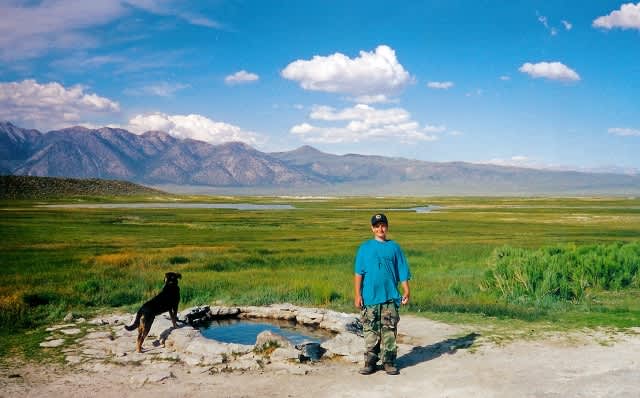Geology for Outdoor Enthusiasts
Don Moyer 11.27.12

I stopped by to visit a fellow Rotarian the other day and as we were chatting I noticed several interesting rocks on a shelf behind his desk. It wasn’t a big surprise, since Zach is a professional geologist. Upon closer examination, I found that among Zach’s rock samples were trilobites, from the Paleozoic Era. Way cool!
One of the fringe benefits of spending a lot of time afield in search of fish or game is all of the other great natural wonders you find along the way. You often get great scenery, with magnificent wildflowers in the foreground and towering peaks under blue skies in the background. Pretty cool stuff. Another fringe benefit is often literally under your feet. If you pay attention to what’s underneath you, it will not only avoid a nasty fall, or a possible snakebite, you might just find mineral treasures as well. Almost every area of our country has fossils or precious mineral deposits. From the famous gold fields of California to the unique black gold of the Dakota badlands, there could literally be buried treasure beneath your feet. Arkansas has productive diamond sites and the Southwest has turquoise that has been used for jewelry by Native Americans for ages. There are opal mines in Idaho, silver deposits in Nevada, and uranium in Utah. I once came across an entire mountain made of volcanic obsidian and tossed a few small boulders of it in my pickup.
Once while fishing a High Sierra stream, I noticed an interesting striped rock glistening in a couple inches of water. Picking up the rock for a closer look, I discovered it was petrified wood that had been nicely polished by the stream. As years went by, I almost always found more chunks of petrified wood right in that same stretch of stream, I have been fascinated by fossils and minerals since childhood when my buddies and I would explore the canyons and hills that were riddled with mine tunnels and their mine dumps as well. We regularly found seashell fossils, and petrified wood and fascinating minerals of all sorts. I recall dragging a yellowish rock sample back to the high school lab for testing. Sure enough, the school Geiger counter went berserk; I had found pitchblende, the ore that contains uranium. Periodically we would stumble across a rock with shiny, silvery crystals in it, a mineral known as galena, or lead crystals.
Once while wandering down a Sierra mountainside on the way to the stream I came across a rock with shiny, silvery looking metallic crystals and at first glance thought I’d found another galena specimen. Upon closer examination, however I discovered the metallic crystals were much harder than the soft lead crystals. What the heck was this stuff? After considerable research and testing, it turned out to be molybdenum, commonly called simply “moly”–a rare metal that is used to harden high-quality stainless steel. I guess if the economy really gets bad, I can always stake a mining claim and mine moly to make a living–though I don’t think I could bring myself to tear up that beautiful mountainside just to get rich. The secret of that moly deposit is safe with me. Over the years, I have found countless mineral treasures. The more fascinating ones end up on display in one of my glass cabinets, and the others end up beneath the drain spout to prevent erosion. None go to waste.
So how do you find some of this vast array of mineral treasure that is scattered across our continent? A good place to start is your local library. Check in with your reference librarian and check out with an armload of books on rocks, minerals, and prospecting. Another great source of information is the host of guide books sold at roadside tourist attractions. Almost every local area has a field guide published by a local expert to assist you in your search. I just pulled one such guide off my bookshelf, Rocks and Rapids of the Tuolumne River by Terry Wright, who is a professor of geology at a local university. Such guide books are available for almost every area and will fit in your fishing vest or backpack with no trouble. Another great way to tune in to the fascinating geology all around us is to take a course from your local community college or university. You’re never too old to go back to school. Check with your local college for field trips that are often offered as summer courses or over the Easter break. You’ll probably come back dirty and dead tired, but you will have had a great time and probably even learn something.
When you are out exploring the outdoors, keep your eyes open, it could pay off in a big way. Periodically on the news you’ll see where a local prospector finds a huge gold nugget. At today’s gold prices that’s a heck of a lot of money. That would help out the old budget considerably. Even if you don’t strike it rich financially, exploring the wonders beneath your feet as well as the beautiful streams and vistas will add another reason for you to be outdoor exploring this wonderful world of ours.

